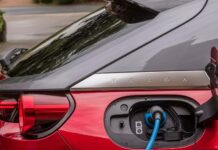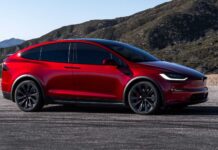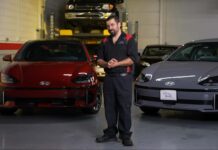[ad_1]
Toyota Motor Europe (TME) has outlined its path towards a 100% reduction of vehicle CO2 emissions in Western Europe, which is responsible for the majority of the Toyota’s new car sales in Europe.
The Japanese company intends to increase the share of zero emission vehicles (ZEVs) out of new sales to at least 50% by 2030, and achieve 100% by 2035. And that is “assuming that sufficient electric charging and hydrogen refueling infrastructures are in place by then…”
However, ZEVs do not mean solely battery-electric vehicles (BEVs), as Toyota is pushing hard with the hydrogen fuel cell option. The company even said that it will launch production of hydrogen fuel cell modules in Belgium, which indicates that FCV volume is expected to increase. In other words, the general goal does not bring us an answer to the question of how big will the BEV share be.
Toyota is currently the European market leader in the hybrid segment. Well over half of its sales are hybrids (70% in Western Europe) – see Q3 2021 results here. The volume of hybrids is so high that the company has no trouble to meet the CO2 emission requirements in the European Union, and even takes some other manufacturers under its wings.
Moreover, the company is increasing sales volume in Europe, gaining market share and is profitable. That explains why there is no real stimulus to quickly switch to BEVs and why Toyota can extend its path more than other manufacturers.
Our question is whether Toyota can afford to wait if the BEV segment will expand quickly and some other manufacturers are considered better in this area?
Gill Pratt, TMC Chief Scientist & TRI CEO explains that the Toyota’s path to carbon neutrality is “based on diversity of powertrain solution,” which means that it will include all powertrain types:
“Whilst Toyota is committed to making millions of Battery Electric Vehicles available to customers, the way to reduce the most net carbon emissions globally is to use every item in our toolbox, including Hybrid Electric, Plug-in Hybrid Electric, Battery Electric and Fuel Cell Electric Vehicles, with the proportions of each optimised to make best use of the infrastructure constraints and customer circumstances of every region, and the limited supply and improving performance of batteries.”
In the part about batteries, Toyota says that it will invest €11.5 billion by 2030 in various topics, including next-generation NiMH batteries for regular hybrids, improved lithium-ion batteries that will cost 50% less and all-new solid-state batteries, which initially will be applied in hybrids:
- Commercial production has started on the world’s first bi-polar NiMh battery which, as well as using less precious minerals, is lower in cost with double the output density of a regular NiMh battery.
- By applying similar techniques to Li-Ion batteries, combined with further efficiencies in vehicle energy consumption, Toyota expects to see a 50% reduction in battery cost per vehicle, without deteriorating range, in the second half of the 2020s; thereby making battery electric vehicles more affordable and accessible.
- On the keenly anticipated introduction of solid-state batteries, Mr Killmann confirmed that, following prototype testing last year, they will likely be first introduced in hybrid electric vehicles before wider deployment including battery electric vehicles with the aims of delivering higher output, longer range and shorter charging times.
[ad_2]
Source link















